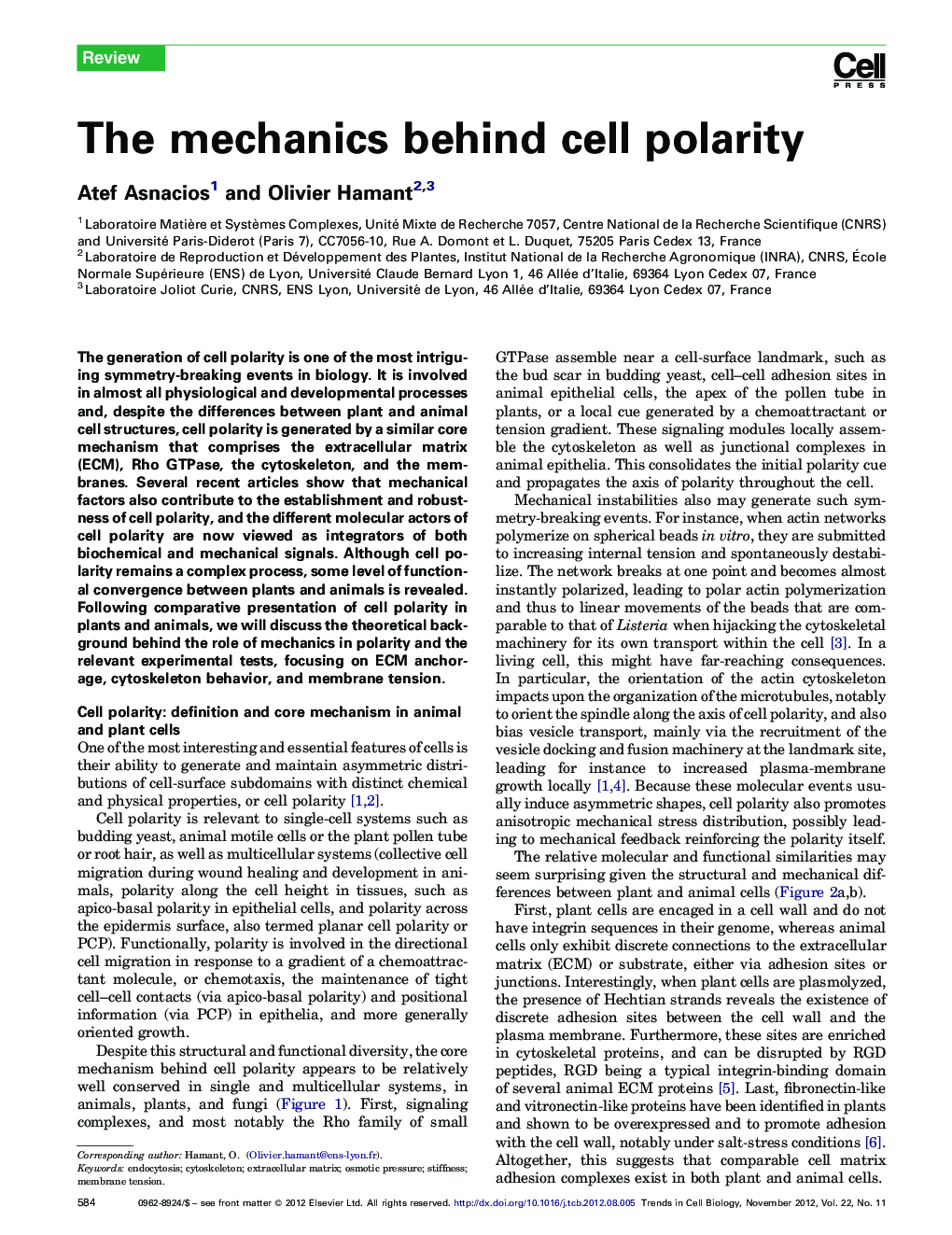| Article ID | Journal | Published Year | Pages | File Type |
|---|---|---|---|---|
| 2204695 | Trends in Cell Biology | 2012 | 8 Pages |
The generation of cell polarity is one of the most intriguing symmetry-breaking events in biology. It is involved in almost all physiological and developmental processes and, despite the differences between plant and animal cell structures, cell polarity is generated by a similar core mechanism that comprises the extracellular matrix (ECM), Rho GTPase, the cytoskeleton, and the membranes. Several recent articles show that mechanical factors also contribute to the establishment and robustness of cell polarity, and the different molecular actors of cell polarity are now viewed as integrators of both biochemical and mechanical signals. Although cell polarity remains a complex process, some level of functional convergence between plants and animals is revealed. Following comparative presentation of cell polarity in plants and animals, we will discuss the theoretical background behind the role of mechanics in polarity and the relevant experimental tests, focusing on ECM anchorage, cytoskeleton behavior, and membrane tension.
